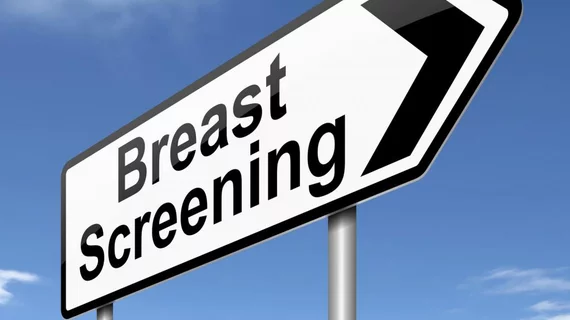Handing women 75 and up mammography ‘decision aid’ results in fewer breast imaging exams
Giving older women a paper-based “decision aid” before visits with their primary care provider resulted in fewer patients receiving mammography screenings.
That’s according to the results of a recent investigation, highlighted Monday in JAMA Internal Medicine. There are currently some 12 million women age 75 and older in the U.S., and that number is rising, accompanied by an increased risk of breast cancer. Mammography screenings have been proven to decrease breast cancer mortality for those 40-74. But due to uncertainties and a lack of clinical trials on women 75-89, guidelines only recommend these women receive guidance on the benefits and harms of such screenings, authors wrote April 20. To aid in this effort, the research team tested offering patients simple reading materials to inform their thought processes.
“Providing women 75 years and older with a mammography screening decision aid before a PCP visit helps them make more informed screening decisions and leads to fewer women choosing to be screened, suggesting that the DA may help reduce overscreening,” concluded lead author Mara Schonberg, MD, a practicing internist and director of shared decision making at Beth Israel Deaconess Medical Center, and several co-authors.
To reach their conclusions, the team administered their aid to a random group of women treated at 11 primary care practices in Massachusetts and North Carolina. The study population of 546 included women who did not have breast cancer nor dementia and had received a mammogram during the last two years, but not the past six months.
Out of the study population, 283 (or 52%) received the decision aid—written at a sixth grade reading level, using large fonts and lots of white space. It included 10 questions to help users calculate their health score, and informed those with higher tallies that breast imaging is unlikely to lengthen their life span.
At the 18-month follow up, about 9% fewer women received mammography screenings in the decision aid group, Schonberg and colleagues reported. They were also more likely to rate their screening intentions lower, be more knowledgeable about the benefits and harms of mammography in their age group, and have a documented discussion with their physician about breast care.
“Although deprescribing low-value medical interventions in older adults has proven to be challenging, we found that providing older women with a decision aid before a PCP visit may help these women make more informed decisions, leading to fewer women choosing screening,” the team wrote. “Most women found the DA to be helpful, clear and not anxiety provoking,” they added.
You can read the entire JAMA Internal Medicine study here, and a corresponding editorial here.

